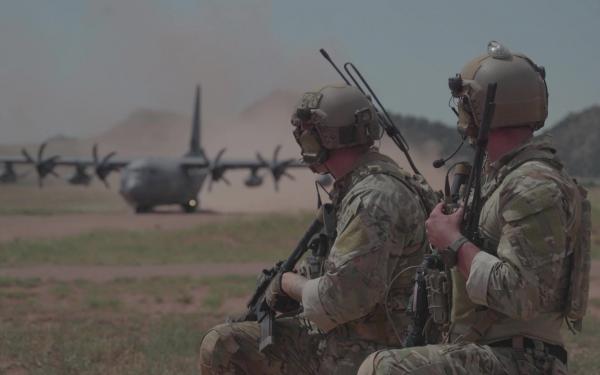After the attacks of 9/11, U.S. special operations units were quickly thrust into the fight in Afghanistan. The 75th Ranger Regiment first deployed to Afghanistan in October of 2001. It has been fighting there and in Iraq ever since. A small, specialized unit has been fighting and training alongside them since day one — this unit is the Air Force’s 17th Special Tactics Squadron (STS).
According to an article published on Military.com, operators from the 17th STS have deployed over 6,900 days with the 75th.
The 17th STS is comprised of Tactical Air Control Parties (TACPs), Combat Controllers (CCTs), Special Reconnaissance Airmen, Special Tactics Officers, and combat missions support personnel, all of whom have been deployed with Ranger units.
Conveniently, the 17th STS’s headquarters are located right next to the 75th Ranger Regiment’s headquarters and the 3rd Ranger Battalion, in Fort Benning, Georgia. In addition, the 17th has detachments alongside the 1st Ranger Battalion at Hunter Army Airfield in Georgia and at Joint Base Lewis-McChord in Washington with the 2nd Ranger Battalion.
Explaining the role of the 17th’s members, Lt. Col. Travis Deutman, Commander of the 17th STS, said in a release: “Our operators are consistently providing desperately needed close-air support at the most critical times in combat, while also coordinating insertion, extraction, and medical and casualty evacuation lift for critically wounded teammates.”
It is not surprising that the Special Tactics community is the most highly decorated Air Force group since the Vietnam War. The 17th has specifically contributed to that honor, with its members having received 80 combat-related medals.
Among these heroes is TACP Tech Sergeant Cam Kelsch. Last year he was awarded a Silver Star and a Bronze Star with Valor for his actions while on deployment in Afghanistan in 2018.
Attached to the 75th Ranger Regiment, his unit was ambushed on a night raid. Putting himself in harm’s way, he called in danger-close air support from an AC-130 that was overhead. Later in the fight, he was pulling a wounded teammate to safety, when he also became wounded. But, during it all, he continued to call in airstrikes and provide medical attention to a wounded teammate and an Afghan soldier.
During the same deployment, he was was awarded a Bronze Star with Valor for putting himself between his wounded team leader and the enemy, when his unit was ambushed.
In order for TACPs to be so successful in combat operations and to maintain their edge, they train hard and often. In a release, 1st Lt. Evan Patoray, the 17th STS Detachment 2 flight commander said,
“The training that we provide simply adds different layers and different [tactics, techniques, and procedures], seeing that the Ranger Regiment conducts operations in a very specific way. As a team, we push each other beyond what we have all seen in combat. We do this because we understand that if this training does not save their own life, it will allow them to save the lives of the Rangers around them.”
Already have an account? Sign In
Two ways to continue to read this article.
Subscribe
$1.99
every 4 weeks
- Unlimited access to all articles
- Support independent journalism
- Ad-free reading experience
Subscribe Now
Recurring Monthly. Cancel Anytime.
The Air Force Special Tactics community has created quite a prestigious and honorable reputation over the years. The op-tempo for these specialized units has been high, but they have continued to answer the call.
Summing it up, the 17th STS Operations Superintendent, Senior Master Sgt. Steve Reedy said: “The foundation of this unit is the heritage of warriors that distinguished themselves in combat before we walked these halls. Every member of this organization earns their right to be a member every day in keeping with that heritage.”
This article was originally published in September 2020.











COMMENTS
You must become a subscriber or login to view or post comments on this article.